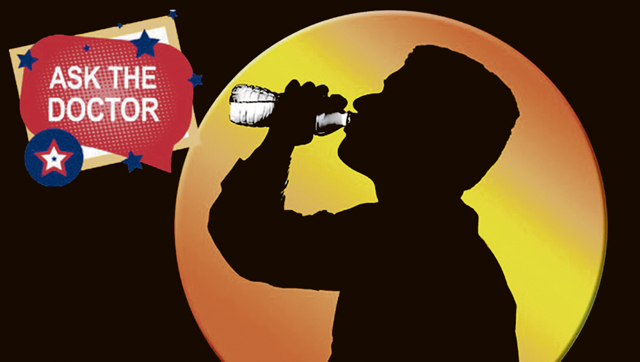 Dear Doc: During a recent run in the hot weather, I started to feel dizzy and got a headache. Could this be heat exhaustion or heat stroke? Can you please explain the difference between the two so that my buddies and I can learn ways to prevent heat-related injuries in the hot weather?
Dear Doc: During a recent run in the hot weather, I started to feel dizzy and got a headache. Could this be heat exhaustion or heat stroke? Can you please explain the difference between the two so that my buddies and I can learn ways to prevent heat-related injuries in the hot weather?
Thank you,
-Sgt. Dizzy Run
Dear Sgt. Run: Whew! That sounds dangerous. With those symptoms, you probably experienced some sort of heat illness. Fortunately, I found the perfect expert to talk to about this.
Army Col. (Dr.) Anthony Noya is the chief of primary care at Bayne-Jones Army Community Hospital, in Fort Polk South, Louisiana. Here’s what he had to say:
“Heat-related illnesses refer to a spectrum of conditions that worsen as the body loses its ability to compensate for the increased core temperature due to environmental heat or metabolic heat.
There are warning signs to be aware of and measures to take to prevent the progression of heat-related illnesses.
Simply put, as with any illness, the result is an inability to function, which can be mild, moderate, or severe.
Risk factors are numerous – generally speaking, the main risk factors are: people who take certain medications that lead to fluid or electrolyte alterations, people at the extremes of age, and insufficient cooling, hydration, and fitness. There are also genetically predisposing conditions that can increase someone’s risk of heat illness.
Heat exhaustion occurs earlier in the spectrum of heat-related illnesses. If left unaddressed, heat exhaustion can rapidly progress to the medical emergency we call heat stroke. It can be difficult to differentiate the two without accurate diagnostic measurements.
The primary difference bet-ween heat exhaustion and heat stroke has to do with core body temperature and persistent, severe neurologic manifestations. Heat stroke involves a core temperature above 104 F (40 C), and persistent neurologic dysfunction to include coma, seizure, and altered level of consciousness, confusion, or headache. If heat stroke has set in and there is a delay in cooling, this condition can be fatal.
Heat stroke’s primary symptoms include a change in mental status, such as confusion, delirium, combativeness, seizures, loss of consciousness, and a core body temperature above 104 F.
Heat exhaustion can present with dizziness, headache, nausea, weakness, unsteady gait, muscle cramps and fatigue. The core body temperature is elevated but remains below 104 F.
To avoid these, particularly during fitness training or working outdoors in the summer heat, I recommend people stay cool, stay hydrated with a balanced liquid that has glucose, electrolytes and water (such as a sports drink). I also recommend you address the early warning signs.
Thankfully, the majority of heat related illness is heat exhaustion or heat cramps. However, if left unaddressed, heat exhaustion can rapidly progress to heat injuries like non-cerebral end organ dysfunction or heat stroke, with severe elevations of core body temperature and nervous system, brain, and other organ dysfunction.
To avoid heat-related illness, it’s important to remove the person from the heat, measure his or her core body temperature (rectal is the preferred method) and initiate rapid cooling. If a rectal thermometer is not available, one reasonable approach is to cool the patient until they begin to shiver.
Cooling them off through cold-water immersion or applying ice packs to their neck, underarms, and lower abdominal or groin area is highly effective if suitable equipment is available.
In circumstances when ice water immersion is not feasible, particularly if the patient has complications requiring aggressive medical intervention, such as a compromised airway or active seizures, trained professionals should use alternative methods of cooling. The goal is to lower the core temperature to about 101 or 102 degrees.
Calling 911 will mobilize trained professionals to assist casualties of heat illness. They will determine if transporting the patient to a hospital for more intensive intervention and management is necessary.
People who must work outdoors can stay ahead of the harmful effects of extreme heat by being aware of the conditions, wearing proper clothing, hydrating, and having cooling capabilities available.
As always, an ounce of prevention is worth a pound of cure. Knowing and addressing the warning signs of heat related illness along with basic prevention is our best approach.”
Sgt. Run, I hope this advice is helpful to you. For more information, check out the Wet Bulb Globe Temperature to gauge when it’s too hot to do certain activities outdoors as well as the Army Public Health Center’s information on heat illness prevention and sun safety.
These are great tips, especially for this time of year. Good luck, my friend, and as always…take care out there!


